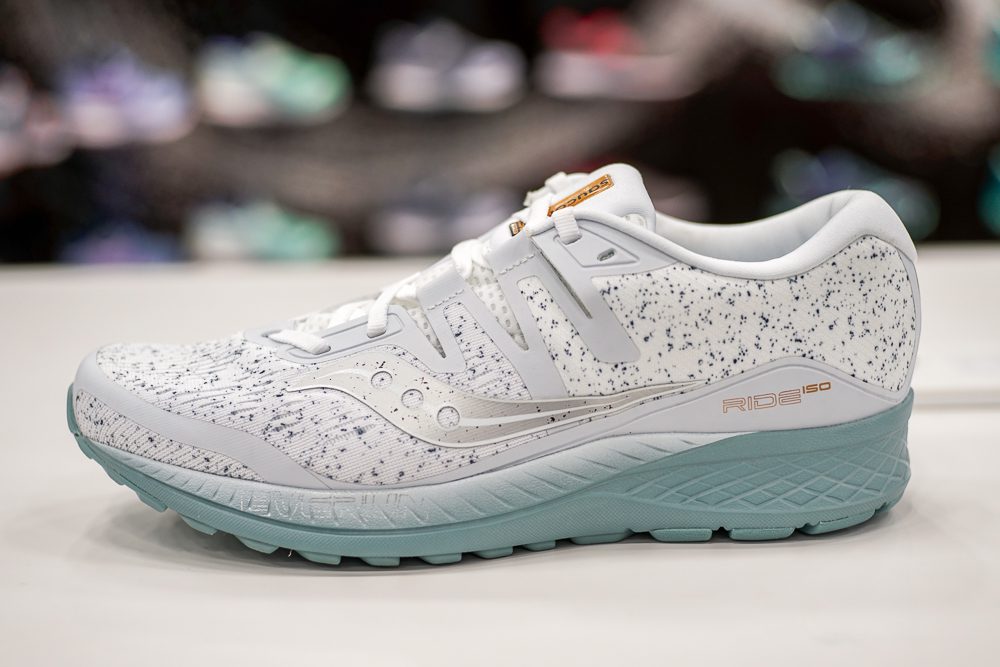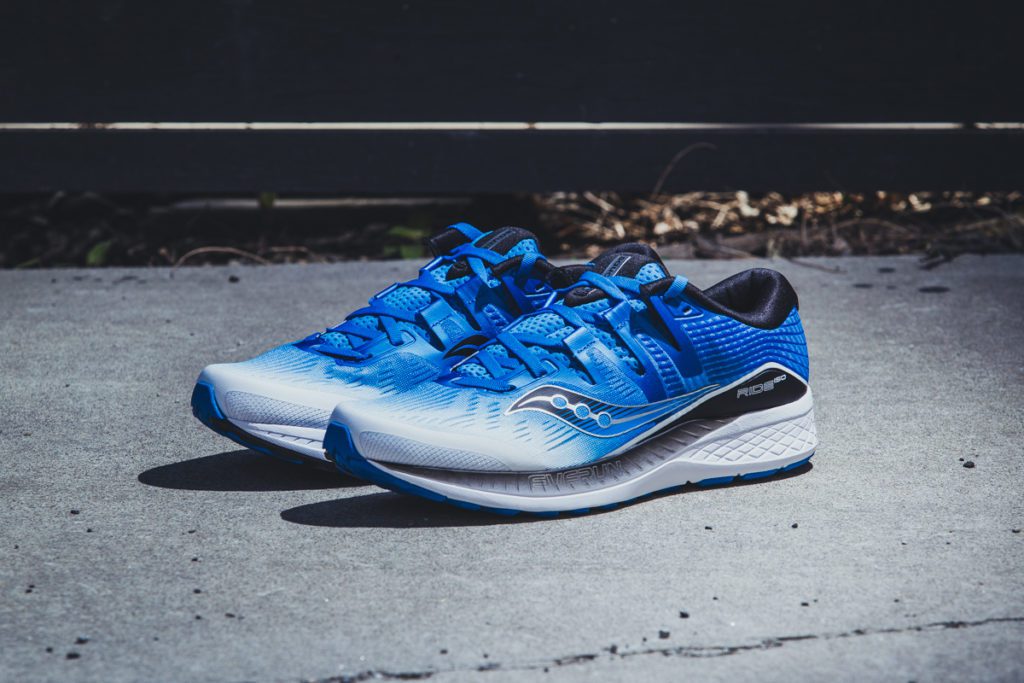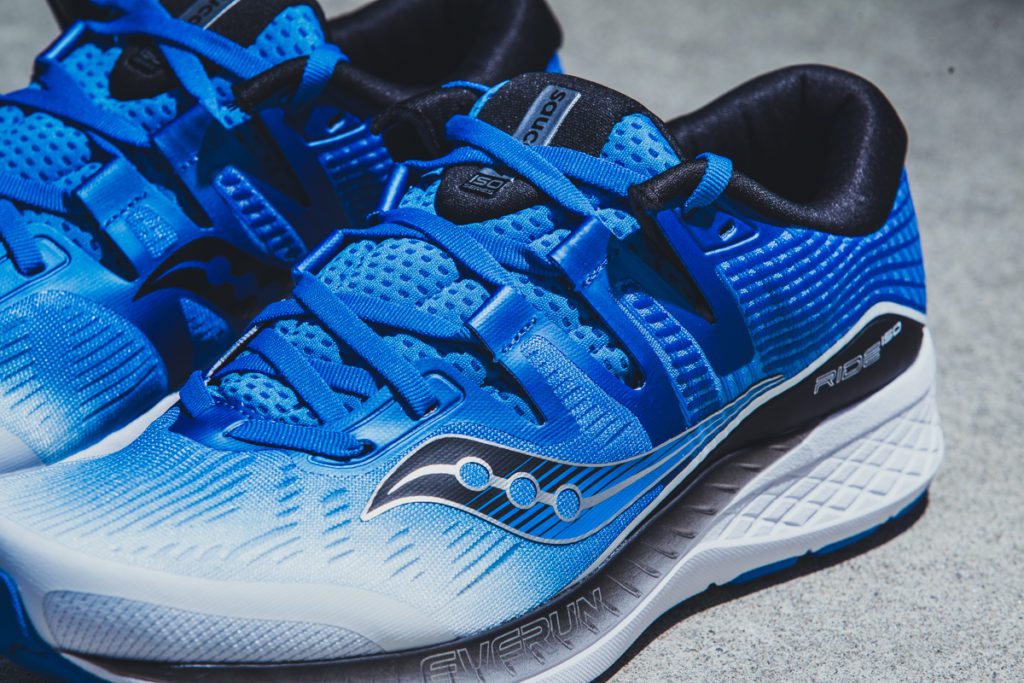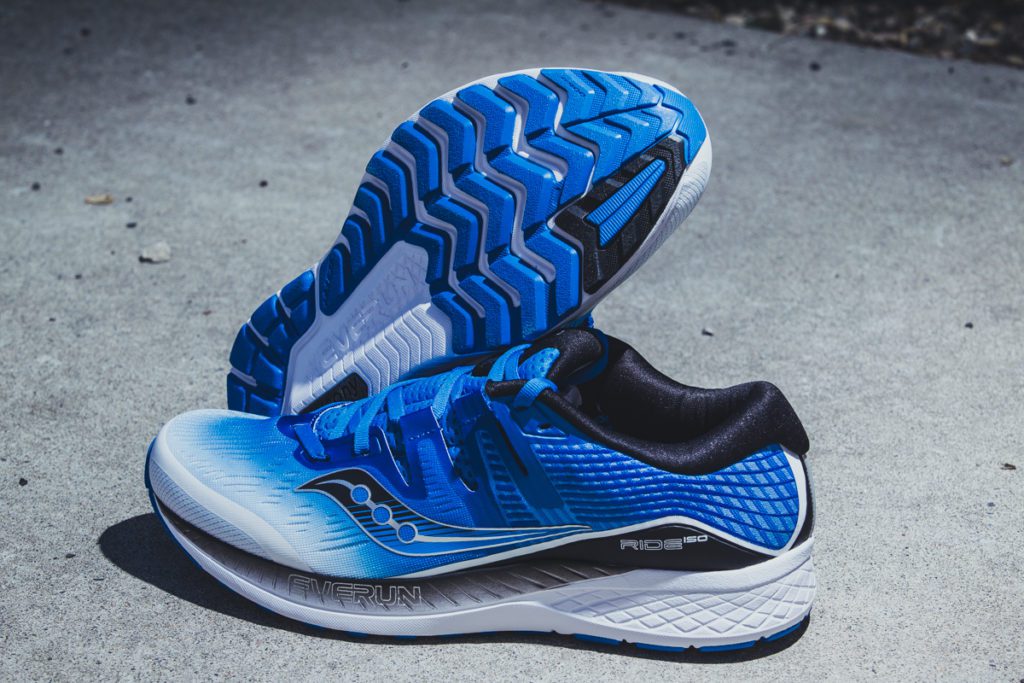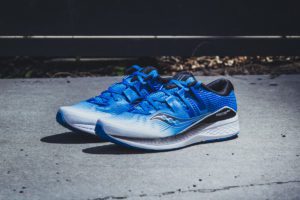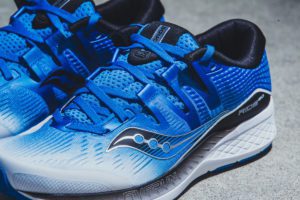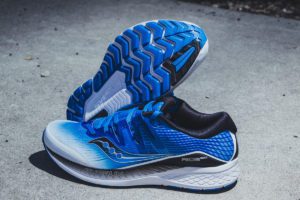Since its official release in May, the Saucony Ride ISO has been making waves. The neutral, cushioned trainer is the successor to the perennially popular Ride 10, and yet somehow the latest iteration of the shoe has managed to continue to improve in subtle and not-so-subtle ways.
Reviewer: Dan Way
I’ve been running in a pair of Ride ISOs for the past month and a half and in that time I’ve put close to 250K on them. I run a lot of mileage (generally at least 500K a month) so I definitely don’t stick to a single shoe but rather, prefer to rotate through a number of shoes depending on the distance and speed of the run I’m doing, and also how I feel. When I started running in the Ride ISOs, I instantly came to appreciate the generous amount of cushioning in a what was a sleek-looking and relatively lightweight shoe. It wasn’t providing–nor is it intended to–any added stability or structural support, but the level of cushioning and the unique upper made it feel as if it was. Best of all, it was exceptionally comfortable. The shoe quickly made its way toward the top of my rotation.
As mentioned, each shoe should have a purpose. The Ride ISO fits a few. I really like this shoe as an everyday bread and butter training shoe, especially when I’m slightly fatigued from a longer or harder run and just want to slow down and avoid beating my body up too much. That is, it’s a perfect shoe for easier efforts and recovery runs. I also used it effectively and think it works really well for longer runs, including those with a bit of speed such as a tempo. I wore the Ride ISOs for several runs in the 25-30K range, some which included 8-12K of continuous tempo and shoes delivered with a quick, smooth and exceptionally comfortable ride (pun, intended). The plush cushioning definitely make it an excellent option for marathon training and while I personally would opt for a slightly lighter shoe on race day, I could easily see many marathoners and half marathoners using this shoe to get them from the start to the finish. Basically, the only time I wouldn’t wear this shoe is for faster intervals and shorter races (which is when the Kinvara 9 comes in handy).
As for the technical elements, the generous and super comfortable cushioning comes from a mix of PWRFOAM and EVERUN and the combination really works well. Even after 250K, the shoe feels as soft and supportive as it did on the first run. There are no dedicated stability features but the TRIFLEX outsole design does ensure efficient heel to toe transition. Perhaps the signature feature of the shoe is the ISOFIT upper, which provides a near customized fit that morphs to the unique shape of your foot and is flexible to meet your running gait and movement patterns. Combined, this creates a flawless and exceptionally comfortable feel with no chafing or unwanted foot movement within the shoe.
To summarize, the Ride ISO is definitely a shoe that anyone could consider whether running for health, fitness or performance. Those training for longer distances such as the half and marathon will find the Ride ISO an excellent option for easy and recovery runs; medium to medium-long runs and even some race pace tempo. For some, it could even be an option for race day. The Ride ISO will go the distance in terms of durability and delivers a soft, comfortable and potentially fast ride with an abundance of underfoot cushioning and upper flexibility.
Dan Way is a fast but far-from-elite millennial runner who has been training, mostly unsuccessfully, to get just a little bit faster over the past 7 years of running. He runs for his health, for performance but mostly just to get from point A to point B.
Reviewer: Anne Francis
When a shoe is in its 11th edition like the Ride model–one of Saucony’s all-time bestsellers–you know it’s likely a winner. After several weeks and approximately 300K of regular training including tempo and longer runs, as well as a 5K, a 10K and a full marathon, I have no hesitation in recommending the Ride ISO as your go-to shoe.
Comfort over the long haul is definitely this shoe’s strong suit. The dual-density midsole combine in a plush, cushiony shoe that’s just as comfortable after 42K as when you laced it up. Built for everything up to the marathon (and beyond), It’s more than reliable for your bigger mileage weeks.
The 8mm heel-to-toe differential (also known as the drop) is what allows for all this great cushioning material, but it definitely makes the shoe more substantial than some of the “lightweight trainers” out there. If you’re a seasoned 5K competitor or track athlete for whom lightness and speed are the priorities on race day, you might prefer something lighter for that purpose, but there’s no reason the Ride ISO can’t still be a staple of your training wardrobe the rest of the time. If you’re a heavy-footed runner with a penchant for the longer distances, you’ll be particularly happy in it.
The long-haul comfort is also a function of the Ride ISO’s excellent mid-stride flexibility. There just aren’t that many shoes that don’t start to dig into the area just behind the base of the toes and cause irritation at a certain point on a long run, but you definitely won’t have to worry about that with the Ride ISO.
The ISO engineered mesh upper and ISOFIT lacing system provide excellent breathability and a customized feel over the instep. The woven heel support is unchanged from the Ride 10 and will keep your heel secure without feeling rigid.
This shoe’s roomy toebox may feel a tad too generous at first, but you’ll appreciate it when your feet start to swell on a long summer run.
The shoe is available in four great-looking colourways, and comes with an extra pair of laces in the accent colour, for those who like to customize the look of their shoe.
Anne Francis is a master’s level recreational runner and mom to three mostly-grown kids, who started running in her early 40s. She has many 5K, 10K half-marathons and age category medals to her credit, plus three marathons. She’s looking forward to her first Boston and New York Marathons next year, both of which she qualified for in 2018.
Weight: Men’s: 9.7 oz. (275 g); Women’s 8.5 oz. (241 g)
Offset: 8 mm
MSRP: $160
[button type=”info” target=”_blank” size=”sm” link=”https://ca.shop.runningroom.com/brands/saucony-1/saucony-men-s-ride-iso-running-shoe.html?selectedColorId=39566?affiliate_id=eT7X85vm8302″] Buy Men’s [/button]
[button type=”info” target=”_blank” size=”sm” link=”https://ca.shop.runningroom.com/women/saucony-women-s-ride-iso-running-shoe.html?affiliate_id=eT7X85vm8302″] Buy Women’s [/button]
